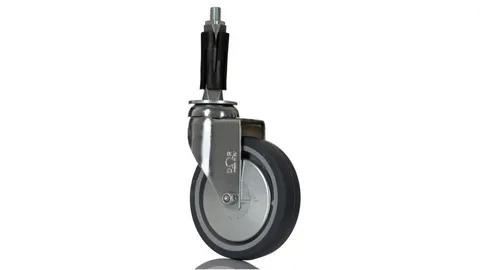Castor wheels are essential components in many applications, from industrial machinery to office chairs, enabling smooth movement and flexibility. However, improper installation can lead to decreased performance, safety hazards, and premature wear. To help you get the best out of your castor wheels, here are the top 5 mistakes to avoid when installing castor wheels.
1. Ignoring the Weight Capacity
One of the most common mistakes when installing castor wheels is not considering the load capacity. Every castor wheel has a specific weight limit it can safely support. Installing wheels that cannot handle the weight of your equipment can cause them to fail quickly, leading to potential damage and safety issues.
Tip: Always calculate the total weight of the equipment and select castor wheels with a load capacity that exceeds that weight to ensure durability and safety.
2. Incorrect Mounting Method
Castor wheels come with different mounting options such as plate mount, stem mount, or bolt hole mount. Choosing the wrong mounting method or improper attachment can result in unstable wheels, wobbling, or even detachment during use.
Tip: Follow the manufacturer’s instructions carefully and ensure the mounting hardware is compatible with your equipment.
3. Overlooking Floor Surface Compatibility
Another critical mistake is neglecting the type of floor surface where the castor wheels will be used. Hard floors like concrete require different wheels than carpeted or uneven surfaces. Using the wrong type can cause excessive wear on the wheels and damage to floors.
Tip: Match the wheel material to your floor type—soft rubber wheels for hard floors and harder wheels for soft surfaces.
4. Failing to Maintain Proper Alignment
Misaligned castor wheels can cause uneven wear and difficulty maneuvering. This often happens when wheels are installed hastily without checking for proper alignment.
Tip: Take the time to align all wheels correctly during installation and periodically check alignment to maintain smooth operation.
5. Neglecting Regular Maintenance
Even the best-installed castor wheels need regular maintenance to stay in top condition. Dust, debris, and lack of lubrication can cause wheels to seize or degrade faster.
Tip: Incorporate routine cleaning and lubrication as part of your maintenance schedule to extend the life of your castor wheels.
Conclusion
Avoiding these top 5 mistakes to avoid when installing castor wheel can save you time, money, and frustration. By paying attention to weight capacity, mounting methods, floor compatibility, alignment, and maintenance, you ensure your castor wheels perform efficiently and last longer. Proper installation is key to safe and smooth mobility for your equipment.


